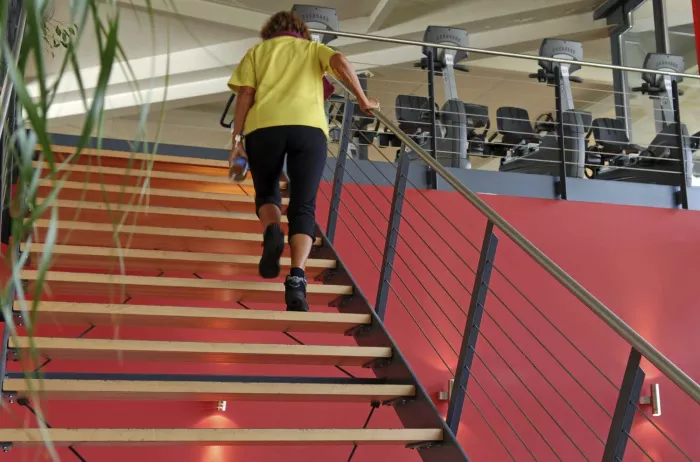When people think about fitness, they often focus on visible muscles—biceps, abs, or thighs. But hidden beneath the surface lies a group of muscles that quietly hold everything together: your core. These muscles include your abdominals, obliques, lower back, pelvic floor, and even the muscles deep within your spine. They’re not just for show—they’re essential for nearly every movement you make.
Your core supports posture, stabilizes the body during activity, and transfers force between the upper and lower body. Without strong core muscles, you may struggle with balance, suffer from back pain, and be more prone to injury. Whether you’re lifting weights, running, sitting at a desk, or simply bending to tie your shoes, your core is working behind the scenes. That’s why improving core strength is not just about building a six-pack—it’s about building a foundation for a healthy, pain-free life.
Understanding the Core: More Than Just Abs
Many people mistakenly believe the core consists solely of the abdominal muscles. While the rectus abdominis—the famous “six-pack” muscle—is a part of the core, it’s just the tip of the iceberg. The true core is a complex network of muscles that wrap around your trunk like a corset. These include the transverse abdominis, the deepest abdominal muscle; the internal and external obliques, which control twisting and side bending; the multifidus and erector spinae, which stabilize the spine; and even the diaphragm and pelvic floor, which contribute to core control from above and below.
These muscles work together to protect your spine, support your internal organs, and maintain control during both dynamic and static movements. In fact, your core plays a role in nearly every physical action. It stabilizes your body when you walk or run. It provides balance when you stand on one leg. It gives you the ability to rotate your torso, lift heavy objects, and sit upright without pain. Understanding the anatomy of the core helps explain why training it properly is essential for functional fitness.
How Core Strength Impacts Everyday Life
You don’t need to be an athlete to benefit from core strength. In fact, everyday tasks like carrying groceries, climbing stairs, or reaching for something on a high shelf all depend on core stability. A weak core can make these simple movements more difficult and increase your risk of injury. For example, if your core can’t stabilize your spine properly, your lower back takes on more strain than it should. Over time, this can lead to chronic pain or disc issues.
For those with sedentary jobs, poor posture and long hours sitting can weaken the core muscles, causing a cascade of problems. You might feel stiffness in your hips, tightness in your shoulders, and a general lack of energy. Strengthening your core can reverse these effects. It improves posture, enhances breathing efficiency, and even supports better digestion. A strong core doesn’t just help you move better—it helps you feel better throughout your day.
The Benefits of Training the Core
Training your core goes beyond aesthetics. Yes, it can help reveal toned abs, but the real benefits lie in function and performance. A strong core enhances athletic ability by allowing better control of movement. Whether you’re sprinting, swimming, playing tennis, or practicing yoga, your core acts as the central link that connects your arms and legs. This connection allows your body to work as a unified whole rather than as separate parts.
Core strength also plays a critical role in injury prevention. It creates a more resilient spine and better load distribution across the body. This is especially important for runners, lifters, and athletes in contact sports. Strong core muscles absorb shocks and protect the spine from excessive motion. Even for older adults, core training improves balance and stability, reducing the risk of falls. Simply put, core strength makes movement safer, more efficient, and more powerful.
How to Train the Core Safely and Effectively
One of the biggest mistakes people make when training their core is doing hundreds of sit-ups or crunches. While these exercises can engage certain abdominal muscles, they often place strain on the neck and spine if done improperly. Moreover, they don’t address the full range of core muscles. A safer and more effective strategy involves working the core in multiple planes of motion—front to back, side to side, and rotationally.
Training the core should also include both stability and movement. Stability exercises teach your core to resist motion and maintain control under stress. Think of planks, dead bugs, and bird-dogs. On the other hand, dynamic exercises build strength through motion. These include Russian twists, mountain climbers, and leg raises. By combining these types of exercises, you can develop a strong, balanced, and functional core that supports all aspects of life and fitness.
Foundational Core Strength Exercises You Should Master
To build a strong foundation, start with exercises that emphasize control and alignment. The basic plank is one of the most effective full-core workouts you can do. It targets the entire midsection, including the deep stabilizers, and teaches you how to engage your core properly. Begin on your elbows and toes, keeping your body in a straight line. Squeeze your glutes and draw your belly button toward your spine. Hold for 20 to 60 seconds without letting your hips drop or your shoulders shrug.
The dead bug is another excellent foundational exercise. Lie on your back with your arms reaching toward the ceiling and your knees bent at 90 degrees. Slowly lower your right arm and left leg toward the ground while keeping your lower back pressed to the floor. Return to the starting position and repeat on the other side. This movement trains coordination, core stability, and control, which are essential for all other core exercises.
Progressing to More Challenging Core Movements
Once you’ve built a solid foundation, it’s time to add complexity and resistance. Side planks are a great next step. They target the obliques and challenge your body to maintain stability on a single side. To perform a side plank, lie on your side with your elbow directly beneath your shoulder. Lift your hips off the ground, keeping your body in a straight line. Hold for 30 seconds on each side.
If you’re ready for a more dynamic challenge, try mountain climbers. Get into a push-up position and drive one knee toward your chest, then switch legs rapidly. This not only fires up the core but also adds a cardiovascular component. Another great progression is the hanging leg raise. If you have access to a pull-up bar, hang with straight arms and slowly raise your legs toward your chest. This move demands serious strength from the lower abdominals and hip flexors.
The Role of Breathing in Core Engagement
Proper breathing is often overlooked in core training, but it’s essential. The diaphragm is a core muscle, and how you breathe can affect core stability. Many people hold their breath during difficult exercises, which increases internal pressure and can lead to strain or improper form. Instead, aim for controlled, rhythmic breathing during each movement.
A technique called diaphragmatic breathing can help you engage your core more deeply. Try lying on your back with one hand on your chest and one on your belly. Inhale through your nose and feel your belly rise, then exhale through your mouth and draw your belly inward. Practicing this breathing style while doing core exercises enhances stability and control. Over time, it becomes a natural part of your training and daily life.
How Often Should You Train Your Core?
You don’t need to train your core every day to see results. Like any other muscle group, it needs time to recover. For most people, training the core two to four times per week is ideal. Focus on quality over quantity. A 15- to 20-minute session of well-designed core work is far more effective than endless repetitions of the same movement. Combine this training with full-body strength exercises that also engage the core, like squats, deadlifts, and kettlebell swings.
Recovery is also crucial. Stretching your hips, lower back, and hamstrings can relieve tension that might interfere with core function. Foam rolling and mobility work improve circulation and keep your muscles healthy. Don’t underestimate the power of rest. A balanced program of strength, movement, and recovery will allow your core to develop efficiently and safely.
Core Training for Different Fitness Goals
Everyone can benefit from core training, but the emphasis may vary depending on your goals. For athletes, explosive core exercises like medicine ball slams and rotational throws improve power and speed. For yogis, isometric holds like boat pose and crow build control and balance. For seniors or those recovering from injury, gentle stability work helps regain strength without risk.
Even if fat loss is your main goal, core exercises play a supporting role. While they won’t burn fat directly, they improve posture and help you perform other high-intensity exercises more effectively. Combined with a proper diet and cardio program, core training can sculpt a leaner, more defined midsection. The key is to match your training to your needs and be consistent in your efforts.
Conclusion
Core strength is more than a fitness buzzword. It’s the foundation of everything you do. From daily tasks to athletic achievements, your core plays a crucial role in how you move, feel, and function. With consistent training, proper form, and attention to breathing and recovery, you can build a resilient, powerful core that enhances your life from the inside out.
Don’t wait until pain or injury forces you to pay attention to your core. Start now. Begin with basic stability exercises, progress to more challenging movements, and enjoy the benefits that ripple through your entire body. A strong core isn’t just about looking better—it’s about living better.
Related Topics



































